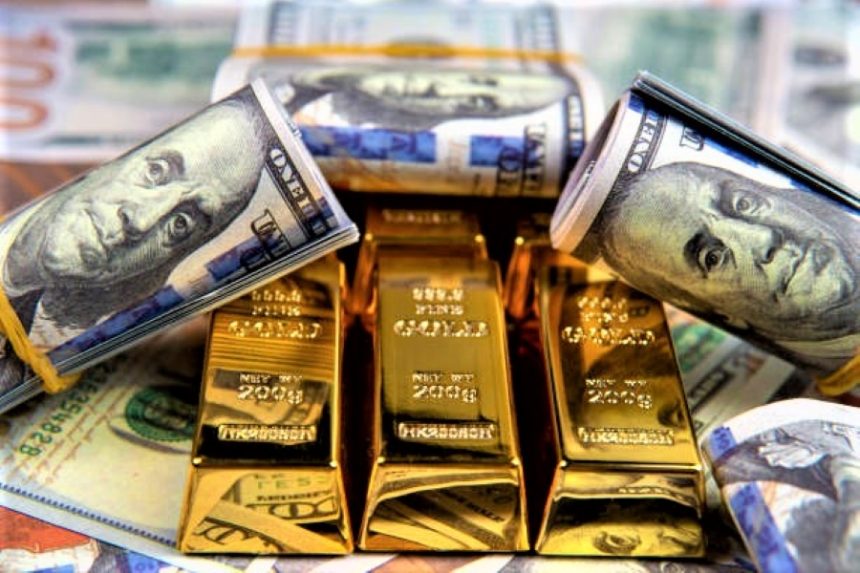Gold (XAUUSD) extended its intraday decline on Monday, falling below the $3,400 mark and reaching a fresh daily low during the early European session. The downward pressure came as investors digested hawkish signals from the Federal Reserve and a firm US Dollar, even as geopolitical tensions flared in the Middle East following US airstrikes on Iranian nuclear facilities.
While escalating military action would normally bolster safe-haven demand for gold, the market reaction has remained subdued as the Greenback benefits more directly from both monetary tightening expectations and global uncertainty. As a non-yielding asset, gold tends to struggle when interest rates remain high and the US Dollar is strong.
Nevertheless, the safe-haven narrative is not dead. With Iranian officials promising retaliation and regional conflict risks rising, gold’s downside appears limited in the near term. Investors are now turning their attention to upcoming global PMI data for clearer signals on economic activity and broader risk sentiment.
Middle East Escalation Sparks Jitters but Fails to Lift Gold
In a dramatic development over the weekend, the US military launched coordinated airstrikes on three Iranian nuclear facilities—Fordo, Natanz, and Isfahan. The operation, which was supported by Israeli intelligence, involved over 125 military aircraft and 75 precision-guided munitions, including Tomahawk missiles.
Iran’s Foreign Minister Abbas Araghchi strongly condemned the action, calling it “outrageous and unlawful” and warning of everlasting consequences. The statement signaled Tehran’s determination to retaliate, heightening concerns about a potential broader regional war.
In response, US President Donald Trump warned that any act of retaliation would be met with “greater force” and suggested the choice for Iran would be between peace or tragedy. These strong words from both sides have kept markets on edge, especially with crude oil prices climbing and risk sentiment weakening.
Despite the geopolitical risk surge, gold prices did not spike as might have been expected. This is largely due to the prevailing strength of the US Dollar, which has become the preferred global safe-haven for the moment—partly due to the Fed’s commitment to tighter-for-longer monetary policy.
Fed’s Hawkish Stance Caps Gold’s Upside
Last week, the Federal Reserve projected two rate cuts in 2025, but it also released a longer-term outlook that includes only one 25-basis-point cut per year in 2026 and 2027. This cautious tone has pushed Treasury yields higher and made the USD more attractive—both of which are bearish for gold.
Fed officials noted that the Trump administration’s reimplementation of broad tariffs, particularly on imports from China and Japan, could lift inflationary pressures, delaying the Fed’s ability to ease policy further. This assessment has cemented the market’s belief that the Fed is in no rush to pivot, reinforcing gold’s underperformance relative to the US Dollar.
While high inflation historically supports gold as an inflation hedge, the Fed’s tightening bias tends to elevate real yields, which weighs on gold’s appeal compared to interest-bearing assets like bonds.
Gold’s Safe-Haven Role Faces a Challenge from USD Dominance
In times of geopolitical crisis, gold often shines as a safe-haven asset. However, the current environment has presented a challenging paradox: despite intensifying conflict risk in the Middle East, gold is underperforming because the USD is acting as the dominant safe haven.
Several factors contribute to this:
- The US Dollar benefits from rising interest rates, making it more attractive in global portfolios.
- Investors are choosing USD-denominated assets like Treasuries as the first line of defense against uncertainty.
- The lack of immediate retaliation by Iran has reduced the urgency to hedge via gold, at least temporarily.
That said, should the conflict escalate beyond isolated strikes—especially if Iran targets US or Israeli interests directly—gold could swiftly regain safe-haven flows, particularly if oil prices surge and volatility returns to equity markets.
PMI Data Could Shift Sentiment
Market attention is now shifting to the release of global flash PMIs, due later on Monday. These surveys will provide early insights into business conditions across key economies, including the US, Eurozone, and UK.
- Weaker-than-expected PMIs could signal a deteriorating global outlook, reviving safe-haven demand for gold.
- Stronger data would reinforce risk-on sentiment and Fed hawkishness, keeping the US Dollar in favor and gold under pressure.
In either case, the data will help determine whether gold’s recent drop is a temporary correction or the beginning of a deeper retracement from last week’s near two-month highs.
Technical View: Gold Trapped in a Cautious Range
Technically, gold is trading in a one-week-old consolidation range, capped by resistance around $3,400 and supported near $3,355–3,360. Monday’s rejection near the upper boundary and drop to fresh daily lows suggest bears are still in control, at least in the short term.
A sustained break below $3,355 could expose deeper support near $3,320, followed by the $3,300 psychological level. On the upside, a close above $3,400 would be required to revive bullish momentum and target a retest of April’s highs near $3,450.
Until then, gold may remain range-bound, driven by headline risk from Iran, data surprises, and USD fluctuations.
What’s Next? Gold Direction Hinges on Iran and the Fed
Looking forward, gold markets are likely to remain headline-driven. Traders will watch for:
- Iran’s military or diplomatic response to the US airstrikes. Any escalation could trigger a sharp gold rally.
- Upcoming speeches from Fed officials—especially if they clarify or walk back the hawkish long-term rate projections.
- Flash PMIs and economic data from the US and Europe that could shift rate expectations and risk appetite.
In the short term, gold remains caught between Fed-driven bearish momentum and geopolitical risk-driven support. Until one of these forces gains dominance, range trading may continue.
[faq-schema id=”40079″]









